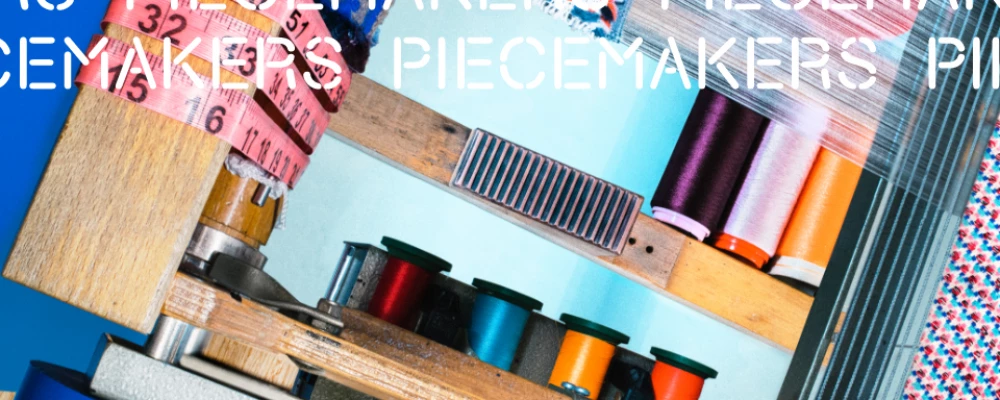
Piecemakers: London's Fashion Manufacturers
The Piecemakers exhibition at London College of Fashion's Fashion Space Gallery was a small affair that packed a massive punch. This gallery offers up a real eclectic jumble of conversations, such as Present Imperfect that questioned how we curate and showcase fashion items in a gallery space, and Digital Disturbances that evaluated the affect of digital concepts and tools on fashion.
Piecemakers, curated by Susanna Cordner, which ran from 11th October 2019-11th January 2020, was an examination of the creative hub within London that perhaps people don't know exists.
It was curated to include only certain industries, but it pinpointed various areas of fashion, accessories and textiles and highlighted key contributors within each sector. Susanna explains in the exhibition guide how she became interested in the location of each studio, with some tucked away on industrial estates, where the finished fashion product seems coincidental rather than planned. But this is why exploring and storytelling these makers is important: they are the lifeblood of our city, even if they're not visible.
"The term ‘piecemaker’ holds multiple meanings. It can refer to a worker paid according to the number of items they produce, or to the person or tool used to make those pieces. It can also be used in reference to a maker or manufacturer who specialises in producing one component or in completing one particular production process."
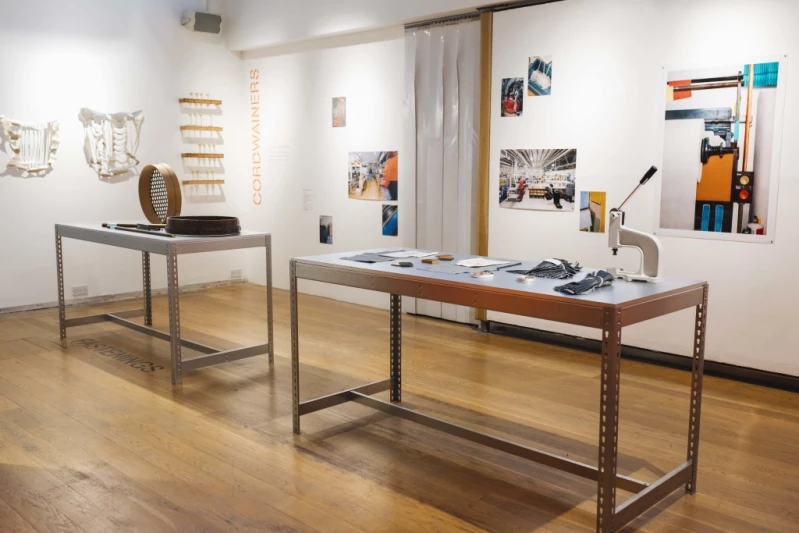
As has been exposed even here in the UK, modern slavery does exist and so if we don't actually stamp out what goes on here, how can we truly assess whether what we're doing is ethical or not. No matter where we produce, we have to create authentic relationships instead of going blindly along. This exhibition brought to life the relationship the makers have with their tools and their studio, and that sometimes even when it isn't glamorous, there is still good to be had - we just have to continue to dig deep to draw those stories out and bring in more work for them.
In this article I'll give an overview of the makers so that you can go and hunt them out yourselves.
Cactus Leather
Steve is an absolute gem. He rides around in full leathers on his motorbike, but is kind-hearted and genuine. With no official training, Steve started making the shoe making tools that he'd been sent by his current employer to get fixed. He is now the last press knife maker in London, and is always trying to require, but there's always someone who requires his handiwork. A press knife maker is someone who creates the dies for cutting out such materials as leather, ready for them to be made into a product.
Steve has been trying to teach others his skills, but a lot of youngsters don't have the resilience to stick it out and Steve has been felt to waste time. It really needs an apprenticeship scheme, or someone already with a business who requires press knives themselves who would like to learn and therefore have more control over the process.
If you are looking for a producer for your leathergoods, Steve and artisanal team in Morocco will provide the service, along with leather embossing and of course the press knife cutting.
Find Steve in Leyton, or via his website.
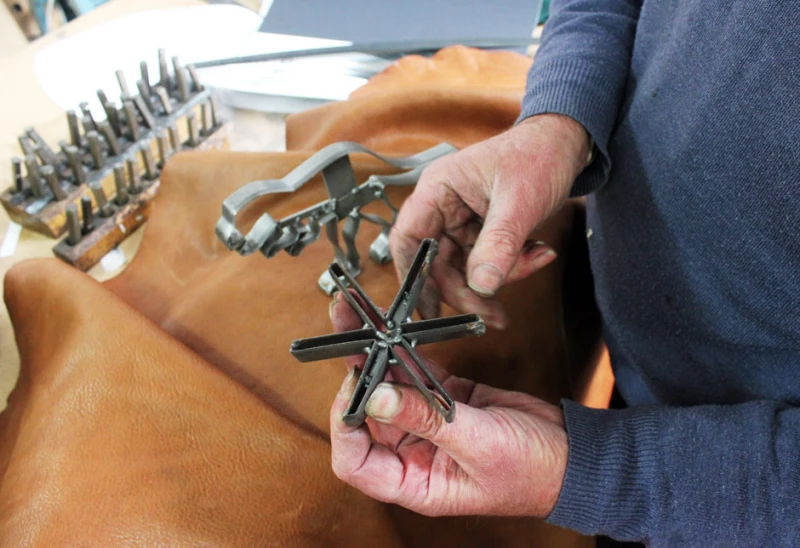
Gina
Based in Tottenham, this luxury footwear brand produce their own designs and those created in collaboration with British brands - producing approximately 300 pairs of shoes a day. Now who has heard of shoe production in London? Most of the time we think of Northampton for British shoe-making, but if you're a London brand looking for a close working relationship and limited transportation, here you go!
What Gina does amazingly, is low impact in terms of waste. Especially when it comes to leather with its incongruous shape, a nesting process is used to project the design's pattern pieces onto a piece of material.
"No one ever looks at a shoe and thinks of the maths." ~ Michael Allton, Head of Design at Gina.

Find Gina on their website here.
Blackhorse Lane Ateliers
So I'm actually coming at this one with a personal perspective, having managed the digital content and e-commerce for this brand. It may be known that clothes are produced here in London (and in fact, I live in an old ribbon factory in North London's warehouse district, which is around the corner from many fashion production studios including one of ASOS's suppliers), but perhaps it isn't known that specifically jeans can be produced here. In fact, there are many smaller fashion brands producing their collections here for the Made In London stamp, such as E.L.V. Denim who take old jeans to create new modern jeans, or Martine Rose who's street-inspired somewhat tailored looks have a cult following.
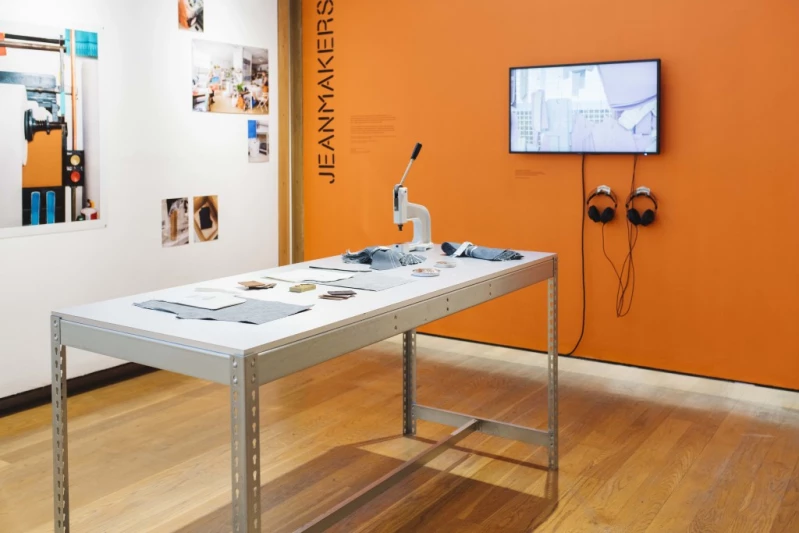
Based in Walthamstow in a factory handed down the generations by founder Han's family, it is a great light space, and one that creates a communitiy with offshoot studios for other local makers including art conservators and weavers. What really makes this brand, is the workers. With 10-30 years of experience each, they are masters of what they do and each with an individual personality that brings the place to life. The ateliers produces own brand jeans that are now sold at Coal Drops Yard in King's Cross, along with online and in worldwide stockists to an audience that is looking specifically for something slower produced. There is a key sharing of materials, origin and production techniques to enable a holistic learning of why the garment costs what it does, who was involved, and how it should last your lifetime. The open door policy at the factory attracts fashion students and locals who want to know more.
The exhibit at Piecemakers allowed a focus on the tools, trims and materials that go into making a pair of jeans - they're not easy to design, or cut, and require specific machinery. If you want denim items for your brand, it really does benefit to go direct to a specialist, and that goes for lingerie and jersey too. But I will reiterate, the workers are what gives the place life, and it is in sharing who made your clothes that gives a brand authenticity. Honestly, the workers don't necessarily care and don't quite understand themselves why what they create costs so much, and there can be a language and cultural barrier here, but if you have the opportunity to sit and build meaningful truthful relationships with those who produce your garments, you'll have a much better story to tell, and workers hopefully with pride.
Find Blackhorse Lane Ateliers at Coal Drops Yard, and by appointment at the E17 atelier. Details on their website.
Ciment Pleating
Just outside of London in Hertfordshire is the oldest pleating firm in the UK. I recall during my BA degree when they came to show us their plissé cards and explain how pleating is done, with an absolute wow at how each card is produced to order and needing to be moved along each metre of fabric for the pleating process. They work with several key London brands, and costume designers for film and TV. The only way to pleat a full length of fabric is to have a specialist pleater do it (I've also worked with one in France, so there are artisanal studios dotted around but they're minimal). You can produce pleats of course with an iron and machine, but to have your pleats set in place, this requires engineering.
Find out more about Ciment Pleating.
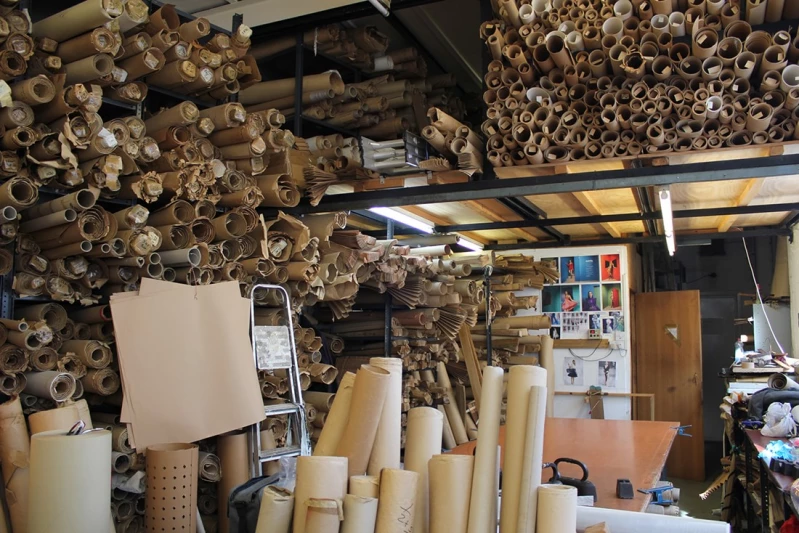
Jenny King Embroidery
Another one outside of the city is Jenny, who's embroidery studio is based in Brighton. Specialising in free range embroidery from artworks, Irish and digital embroidery, Jenny's studio works with luxury fashion brands such as Mary Katrantzou and Marc Jacobs, and theatre such as The Globe. The work is stunning, and honestly drool-worthy. In the portfolio you'll see a massive range of embroidery types that really showcase just what's possible with your vision.
I guess what needs to be said is that most embroidery threads have to be synthetic for the tenacity and strength, so in terms of sustainability here we'd be looking at the fact that the garment probably wouldn't be washed often, would be kept for a long time and could be stitched onto another synthetic for possible full garment recyclability in future. It's worth though considering innovations and whether the studio would be willing to work with new thread types or something even biodegradable, like with Rachel Clowes' sequins.
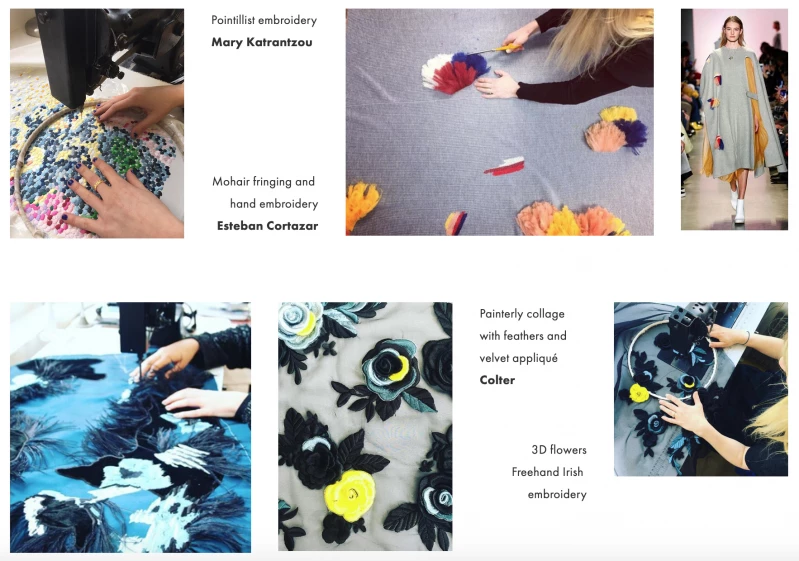
Rare Thread
This is a textile design studio founded by Kirsty McDougall and Laura Miles that specialises in producing woven and multi-process materials. You may have heard of Kirsty as the co-founder of Dashing Tweeds, and Laura has been instrumental in inspiring through the technical constraints of a machine. They produce a collection of samples to inspire, that can be bought as starting points for further fabric development or even as artwork, and as you could imagine with the background in mega tweeds, they like to use unusual materials. So perhaps they're the go to if you looking at exploring newer fibres, and can investigate through sampling if they're useable, though they also already work with mills to consult on sustainable production methods and waste reduction in fabric manufacture.
